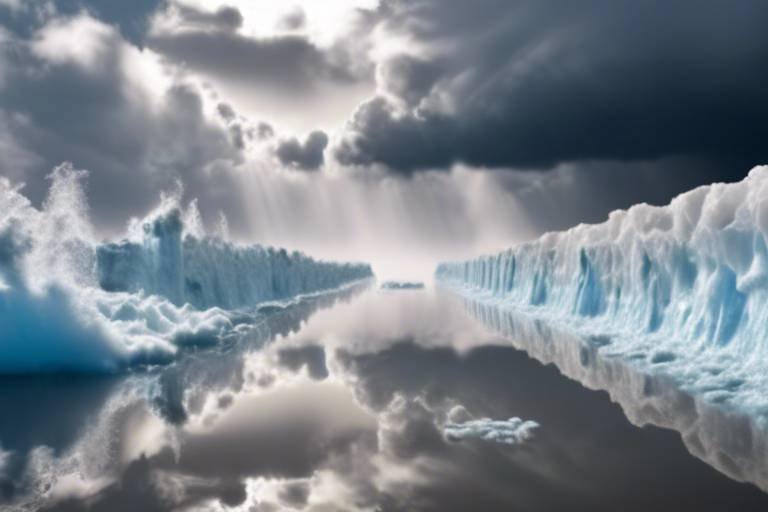The Physics of Climate Change - What You Need to Know
Climate change is not just a buzzword; it's a reality that affects every corner of our planet. But what exactly is happening beneath the surface? To truly understand climate change, we need to delve into the fundamental principles of physics that govern our climate system. This article will guide you through the intricate web of greenhouse gases, solar radiation, and feedback mechanisms that shape our environment. By the end, you'll have a clearer picture of how these elements interact and what they mean for our planet's future.
Greenhouse gases are the unsung heroes—and villains—of our atmosphere. Composed primarily of carbon dioxide (CO2), methane (CH4), and nitrous oxide (N2O), these gases play a crucial role in regulating Earth's temperature. They trap heat from the sun, creating a warming blanket around our planet. But where do these gases come from? They originate from various sources, including:
- Fossil fuel combustion (cars, factories, power plants)
- Agricultural practices (livestock, fertilizers)
- Deforestation (reduced carbon absorption)
The physics behind their heat-trapping capabilities is fascinating. When solar radiation reaches Earth, some of it is absorbed, while the rest is reflected back into space. Greenhouse gases capture some of this reflected energy, preventing it from escaping, which leads to a gradual increase in global temperatures. This process is akin to wrapping yourself in a cozy blanket on a chilly night—it keeps the warmth close, but too many layers can lead to overheating.
Now, let’s talk about the sun—the ultimate energy source for our climate system. Solar radiation is what fuels everything from weather patterns to ocean currents. But how does this energy interact with our atmosphere? When sunlight hits the Earth, it can be absorbed, reflected, or scattered. The balance of these interactions is crucial for maintaining a stable climate.
Different surfaces on Earth have varying abilities to absorb or reflect solar radiation. For instance, dark surfaces like forests and oceans tend to absorb more heat, while lighter surfaces such as ice and snow reflect a significant amount of sunlight. This difference in absorption and reflection plays a critical role in local and global climates. Understanding these processes is essential for grasping climate variability. Imagine wearing a black shirt on a sunny day versus a white one; the black shirt absorbs heat, making you feel warmer, while the white shirt reflects it, keeping you cooler.
The albedo effect is a key concept here. It describes how reflective surfaces, like ice and snow, influence temperature. As global temperatures rise, ice melts, reducing the Earth's albedo and allowing more sunlight to be absorbed, which in turn leads to further warming. This creates a feedback loop that can accelerate climate change. Think of it as a snowball rolling down a hill; as it gains momentum, it becomes harder to stop.
Urban areas often have lower albedo due to the prevalence of concrete and asphalt, which absorb rather than reflect heat. This phenomenon contributes to the urban heat island effect, where cities become significantly warmer than their rural surroundings. As urbanization continues to expand, understanding its impact on local climates becomes increasingly important. It’s like living in a greenhouse; the more structures you have, the more heat gets trapped.
Atmospheric circulation patterns are another crucial element dictating climate zones and weather systems. These patterns are driven by the uneven heating of the Earth’s surface, leading to areas of high and low pressure. The physics behind these patterns is complex, but they play a vital role in distributing heat around the planet. Think of them as the Earth's conveyor belt, moving warm air from the equator toward the poles and bringing cooler air back down.
Feedback mechanisms can either amplify or dampen climate changes, making them critical for understanding future scenarios. Positive feedback loops, for instance, can accelerate warming, while negative feedback loops can help stabilize the climate. Let’s take a closer look at some of these mechanisms.
Water vapor is a potent greenhouse gas and plays a significant role in climate feedback. As temperatures rise, the atmosphere can hold more moisture, leading to higher humidity levels. This increase in water vapor further enhances warming, creating a positive feedback loop. It’s like adding fuel to a fire—the more moisture in the air, the hotter it gets.
The carbon cycle is essential for understanding climate change. Carbon dioxide is cycled through various Earth systems, including the atmosphere, oceans, and living organisms. Human activities, particularly fossil fuel combustion and deforestation, have disrupted this cycle, leading to elevated CO2 levels and global temperature rise. Imagine a delicate balance being tipped; once it shifts, the consequences can be profound.
Climate models are indispensable tools for predicting future climate scenarios. These models are grounded in the physics of the atmosphere and oceans, simulating complex interactions within the climate system. Understanding the physics behind these models is crucial for informing policy and mitigation strategies.
Various modeling techniques help simulate climate systems, including numerical models that use mathematical equations to represent physical processes. These models can provide insights into potential future climates and guide decision-making. It’s akin to using a weather app; while it may not always be 100% accurate, it gives you a good idea of what to expect.
While climate models are powerful, they come with uncertainties. These uncertainties stem from various sources, including the complexity of climate systems and the challenges in predicting human behavior. Understanding these uncertainties is vital for climate predictions and policy decisions. It’s like navigating through fog; you can see some things clearly, but others remain shrouded in uncertainty.
Q: What are greenhouse gases?
A: Greenhouse gases are gases that trap heat in the atmosphere, including carbon dioxide, methane, and nitrous oxide.
Q: How does solar radiation affect climate?
A: Solar radiation is the primary energy source for Earth's climate system, influencing temperature, weather patterns, and ocean currents.
Q: What is the urban heat island effect?
A: The urban heat island effect refers to urban areas being significantly warmer than their rural surroundings due to human activities and infrastructure.
Q: Why are climate models important?
A: Climate models help predict future climate scenarios, guiding policy and mitigation strategies to combat climate change.

Understanding Greenhouse Gases
Greenhouse gases are the unsung heroes and villains of our planet's climate system. They play a critical role in regulating Earth's temperature, acting as a blanket that keeps our planet warm enough to support life. Without these gases, Earth would be a frozen wasteland, devoid of the vibrant ecosystems we cherish. But as human activities have ramped up the concentration of these gases, particularly in the last century, the balance has been tipped, leading to global warming and climate change.
So, what exactly are greenhouse gases? They include gases like carbon dioxide (CO2), methane (CH4), nitrous oxide (N2O), and water vapor. Each of these gases has unique properties that contribute to their heat-trapping capabilities. For instance, carbon dioxide is released when we burn fossil fuels, while methane is emitted during the production and transport of coal, oil, and natural gas, as well as from livestock and other agricultural practices.
Here’s a quick breakdown of the major greenhouse gases and their sources:
| Greenhouse Gas | Sources | Global Warming Potential (GWP) |
|---|---|---|
| Carbon Dioxide (CO2) | Burning fossil fuels, deforestation | 1 |
| Methane (CH4) | Agriculture, landfills, natural gas | 25 |
| Nitrous Oxide (N2O) | Agricultural practices, industrial activities | 298 |
| Water Vapor | Natural processes, evaporation | Variable |
As we look at the above table, it's clear that while carbon dioxide is the most abundant greenhouse gas produced by human activity, methane and nitrous oxide have significantly higher global warming potentials. This means that they are far more effective at trapping heat in the atmosphere, even in smaller quantities. For example, methane is over 25 times more effective than CO2 at warming the Earth over a 100-year period. This is why understanding the sources and impacts of these gases is so crucial in the fight against climate change.
But how do these gases actually trap heat? It all comes down to physics. When solar radiation reaches the Earth, some of it is absorbed by the surface, warming the planet. However, the Earth also emits energy back into space in the form of infrared radiation. Greenhouse gases absorb this infrared radiation and re-radiate it in all directions, including back towards the Earth’s surface. This process is known as the greenhouse effect, and it is essential for maintaining the planet's temperature. Without it, we would face extreme temperature fluctuations, making life as we know it impossible.
As we dive deeper into the complexities of climate change, it’s essential to recognize that the increase in greenhouse gases is not just a scientific concern—it’s a personal one. It affects our health, our environment, and our future. The more we understand these gases, the better equipped we are to tackle the challenges they present. So, the next time you hear about climate change, remember that it’s not just about warming temperatures; it’s about the intricate dance of gases that keep our planet alive.
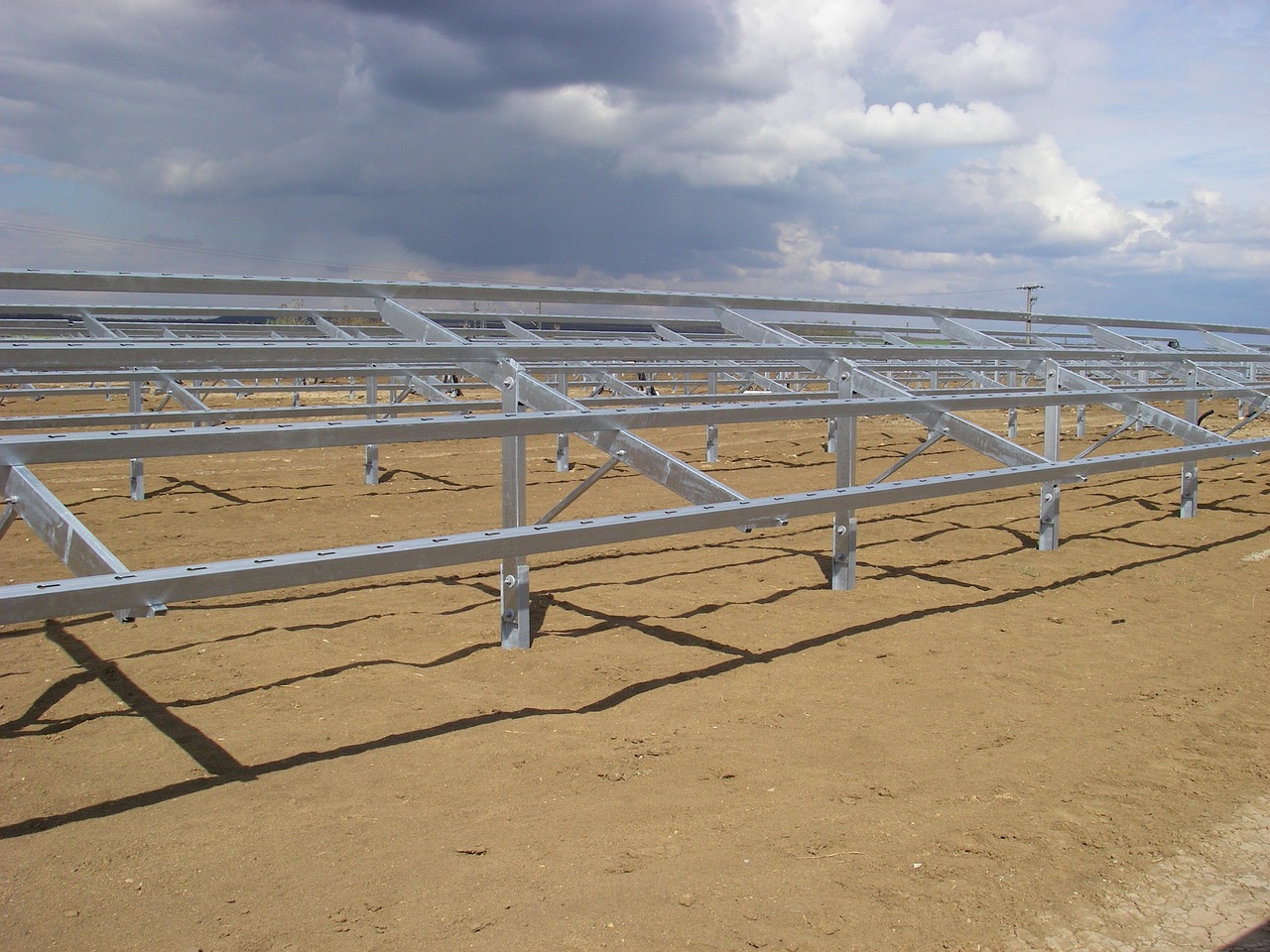
The Role of Solar Radiation
Solar radiation is the lifeblood of our planet, acting as the primary energy source that drives Earth's climate system. Without the sun, our world would be a frigid wasteland, devoid of life. But let's take a closer look at how this radiant energy interacts with our atmosphere and surface, shaping weather patterns and influencing climate dynamics. It's like a grand symphony, with each note playing a crucial role in the overall harmony of our environment.
When solar energy reaches Earth, it doesn't just hit the surface and stop there. Instead, it undergoes a fascinating dance, interacting with various elements of our atmosphere. Some of this energy is absorbed by the land and oceans, while a portion is reflected back into space. The balance between absorption and reflection is vital for maintaining a stable climate. If too much energy is absorbed, we face the risk of overheating our planet, while excessive reflection can lead to cooling.
Different surfaces on Earth have unique properties when it comes to absorbing or reflecting solar radiation. For instance, dark surfaces like forests and oceans tend to absorb more sunlight, warming the area, while lighter surfaces such as ice and snow reflect a significant amount of solar energy, helping to keep temperatures lower. This interplay is crucial in understanding climate variability. To illustrate this, consider the following table:
| Surface Type | Absorption Rate | Reflection Rate (Albedo) |
|---|---|---|
| Forests | 70-90% | 10-30% |
| Oceans | 80-90% | 10-20% |
| Desert | 30-50% | 50-70% |
| Ice/Snow | 10-20% | 80-90% |
This table highlights how varying surfaces absorb and reflect solar radiation, illustrating the concept of albedo and its impact on climate. The albedo effect is particularly significant because reflective surfaces, like ice and snow, play a crucial role in regulating the Earth's temperature. As climate change progresses and these surfaces diminish, we may see a dramatic increase in global temperatures, creating a feedback loop that exacerbates the situation.
The albedo effect is more than just a scientific term; it represents a critical feedback mechanism in our climate system. When ice caps and glaciers melt, they reveal darker surfaces beneath, which absorb more heat. This, in turn, leads to further warming and more ice melt—a vicious cycle that can spiral out of control. It's as if our planet is caught in a game of tug-of-war, with sunlight on one side and reflective surfaces on the other. As the balance tips, we face dire consequences.
Urbanization adds another layer of complexity to the role of solar radiation. Cities often feature lower albedo due to the prevalence of concrete, asphalt, and buildings, which absorb heat rather than reflect it. This phenomenon contributes to what we call the urban heat island effect, where urban areas become significantly warmer than their rural surroundings. This temperature difference can lead to altered weather patterns, increased energy consumption for cooling, and even health risks for city dwellers.
In summary, the role of solar radiation is multifaceted and crucial for understanding climate dynamics. The balance between absorption and reflection, the albedo effect, and the impact of urbanization all play significant roles in shaping our climate. As we continue to grapple with the challenges posed by climate change, it's essential to grasp these fundamental principles to inform our actions and policies moving forward.
- What is solar radiation? Solar radiation is the energy emitted by the sun, which reaches Earth and drives its climate system.
- How does the albedo effect influence climate? The albedo effect affects how much solar energy is reflected back into space versus absorbed by the Earth, impacting global temperatures.
- What are the effects of urbanization on climate? Urbanization can lead to lower albedo and increased heat absorption, contributing to the urban heat island effect and altering local climates.
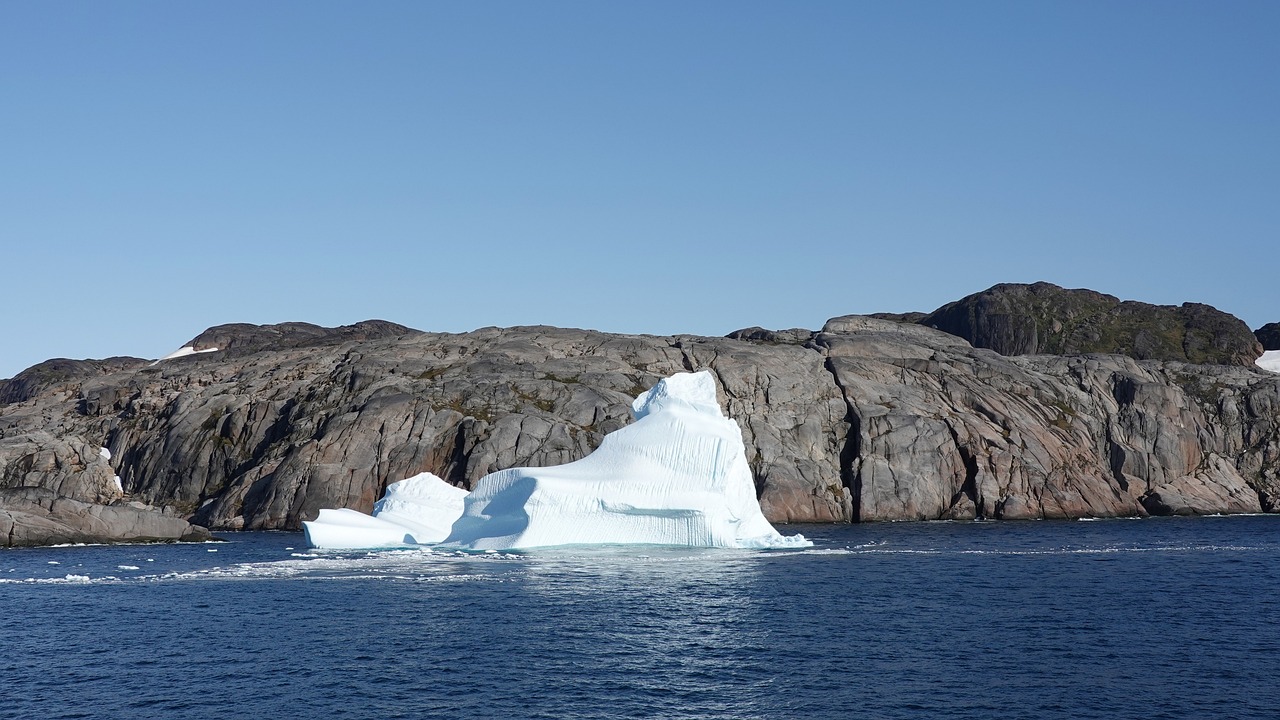
Absorption and Reflection
When we talk about climate change, one of the key players in the game is the way different surfaces on Earth absorb and reflect solar radiation. Imagine the Earth as a giant sponge soaking up energy from the sun; some parts of this sponge are better at soaking up heat than others. This phenomenon is crucial because it directly influences local and global climates. For instance, darker surfaces, like oceans or forests, tend to absorb more solar energy, while lighter surfaces, such as ice and snow, reflect it. This difference in absorption and reflection can create significant temperature variations across the planet.
To better understand this concept, let’s break down how various surfaces interact with sunlight:
- Dark Surfaces: These include forests and oceans, which absorb a lot of solar radiation, leading to warmer temperatures.
- Light Surfaces: Ice, snow, and deserts reflect a significant portion of sunlight, helping to keep those areas cooler.
- Urban Areas: Cities often have a mix of surfaces, but they typically feature more dark materials like asphalt, which contributes to the urban heat island effect.
The concept of albedo comes into play here as well. Albedo is a measure of how much light that hits a surface is reflected without being absorbed. High albedo surfaces, like glaciers, reflect most of the sunlight, while low albedo surfaces, like forests, absorb more, leading to increased warming. This is particularly concerning as the planet warms up; melting ice reduces the Earth's overall albedo, causing even more heat to be absorbed and accelerating the warming process. It's like peeling off a layer of insulation that keeps your home cool during summer!
Furthermore, the implications of absorption and reflection are not just limited to temperature changes. They also affect weather patterns and precipitation. For instance, when certain areas become warmer due to increased absorption, it can lead to changes in wind patterns, which then influences where rain falls. This can create a domino effect, impacting agriculture, water supply, and even biodiversity.
In conclusion, understanding how different surfaces absorb and reflect solar radiation is vital for grasping climate variability. It’s a complex interplay that shapes our climate system, influencing everything from local weather to global climate trends. As we continue to study these interactions, we can better predict and mitigate the impacts of climate change.
- What is albedo? Albedo is the measure of reflectivity of a surface, with higher values indicating more reflectivity.
- How does urbanization affect climate? Urbanization typically decreases albedo due to dark surfaces like asphalt, leading to higher local temperatures.
- Why is it important to understand absorption and reflection? Understanding these processes helps us predict climate variability and develop strategies to combat climate change.

Albedo Effect
The is a fascinating phenomenon that plays a crucial role in our planet's climate system. Essentially, albedo refers to the measure of how much sunlight is reflected by a surface. Surfaces with high albedo, like ice and snow, reflect a significant portion of solar radiation back into space, while darker surfaces, such as forests or oceans, absorb more heat. This difference in reflectivity can lead to substantial variations in temperature and climate patterns.
Imagine walking on a snowy day versus a sunny beach. The snow feels cold underfoot, while the sand heats up quickly. This is the albedo effect in action! When ice and snow cover large areas, they help keep the planet cool. However, as global temperatures rise, ice melts, exposing darker surfaces that absorb more heat. This creates a vicious cycle, where warming leads to more melting, which in turn causes even more warming. This feedback loop is critical in understanding climate change and its impacts.
To illustrate the importance of the albedo effect, consider the following table that summarizes different surfaces and their respective albedo values:
| Surface Type | Albedo Value |
|---|---|
| Fresh Snow | 0.80 - 0.90 |
| Desert Sand | 0.30 - 0.45 |
| Grassland | 0.15 - 0.25 |
| Ocean Water | 0.06 - 0.10 |
| Asphalt | 0.05 - 0.15 |
As you can see from this table, fresh snow has an exceptionally high albedo value, meaning it reflects most of the sunlight that hits it. In contrast, darker surfaces like asphalt have a much lower albedo, absorbing most of the heat. This stark contrast is why regions covered in snow can stay cooler than urban areas where dark materials dominate.
In addition to the direct effects on temperature, the albedo effect has broader implications for climate systems. For instance, as polar ice caps continue to melt, the reduction in high-albedo surfaces accelerates global warming. This phenomenon is not just a scientific curiosity; it has real-world consequences for ecosystems, weather patterns, and even human activities. The less reflective the surface, the more heat is trapped, leading to changes in weather systems that can result in extreme weather events.
Understanding the albedo effect is essential for climate modeling and predicting future climate scenarios. As scientists work to develop accurate models, they must account for how changes in land use, urbanization, and ice cover will influence the planet's energy balance. This knowledge is vital for crafting effective policies aimed at mitigating climate change and protecting our environment.
In conclusion, the albedo effect is a key player in the climate change narrative. By understanding how different surfaces interact with solar radiation, we can better grasp the complexities of our climate system and the urgent need for action to curb global warming.
- What is the albedo effect? The albedo effect measures how much sunlight is reflected by a surface, influencing temperature and climate.
- Why is the albedo effect important? It helps regulate Earth's temperature and plays a significant role in climate feedback loops.
- How does urbanization affect the albedo effect? Urban areas typically have lower albedo due to materials like asphalt, absorbing more heat and contributing to the urban heat island effect.
- What are some examples of surfaces with high and low albedo? High albedo surfaces include fresh snow and ice, while low albedo surfaces include oceans and asphalt.

Impact of Urbanization
Urbanization is reshaping our planet in profound ways, and its impact on climate is nothing short of significant. As cities expand and populations surge, the natural landscapes are increasingly replaced by concrete jungles. This transformation leads to a phenomenon known as the urban heat island effect, where urban areas experience higher temperatures than their rural surroundings. Why does this happen? It’s all about how different materials absorb and retain heat. While natural landscapes like forests and grasslands have a cooling effect, urban surfaces such as asphalt and concrete absorb sunlight during the day and release it slowly at night, keeping cities warmer.
Moreover, urbanization alters local climate patterns by changing the way air circulates. Tall buildings can create wind tunnels, while the prevalence of hard surfaces reduces moisture evaporation, which is crucial for cooling. This can lead to a vicious cycle where higher temperatures increase energy demand for cooling systems, resulting in more greenhouse gas emissions. It's like a hamster wheel that we just can't seem to escape from!
Additionally, urban areas often have lower albedo compared to rural areas. Albedo refers to the reflectivity of a surface; darker surfaces absorb more heat. As cities grow, the abundance of dark roofs and pavements means less sunlight is reflected back into space, further exacerbating warming. The table below illustrates the differences in albedo between various surfaces:
| Surface Type | Albedo Value |
|---|---|
| Fresh Snow | 0.80 - 0.90 |
| Grass | 0.15 - 0.25 |
| Asphalt | 0.05 - 0.10 |
| Concrete | 0.20 - 0.30 |
As you can see, urban materials have significantly lower albedo values, which means they contribute to higher temperatures. This is particularly concerning as urban populations grow and more land is developed. The implications are not just limited to heat; they extend to water management, air quality, and even biodiversity. Urban areas often drain rainwater rapidly, leading to flooding and reduced groundwater recharge, while also increasing the risk of pollution. It's a complex web of interactions that highlights the urgent need for sustainable urban planning.
In conclusion, the impact of urbanization on climate is multifaceted and profound. As we continue to build and expand our cities, understanding these dynamics becomes crucial. We need to consider innovative solutions like green roofs, urban forests, and reflective materials to mitigate these effects. After all, the health of our planet—and our future—depends on how we navigate this urban transformation.
- What is the urban heat island effect? The urban heat island effect refers to urban areas being significantly warmer than their rural surroundings due to human activities and changes in land cover.
- How does urbanization affect local climate? Urbanization affects local climate by altering air circulation, increasing heat retention, and reducing moisture evaporation.
- What can be done to mitigate the effects of urbanization on climate? Solutions include implementing green roofs, increasing vegetation, and using reflective materials in urban planning.
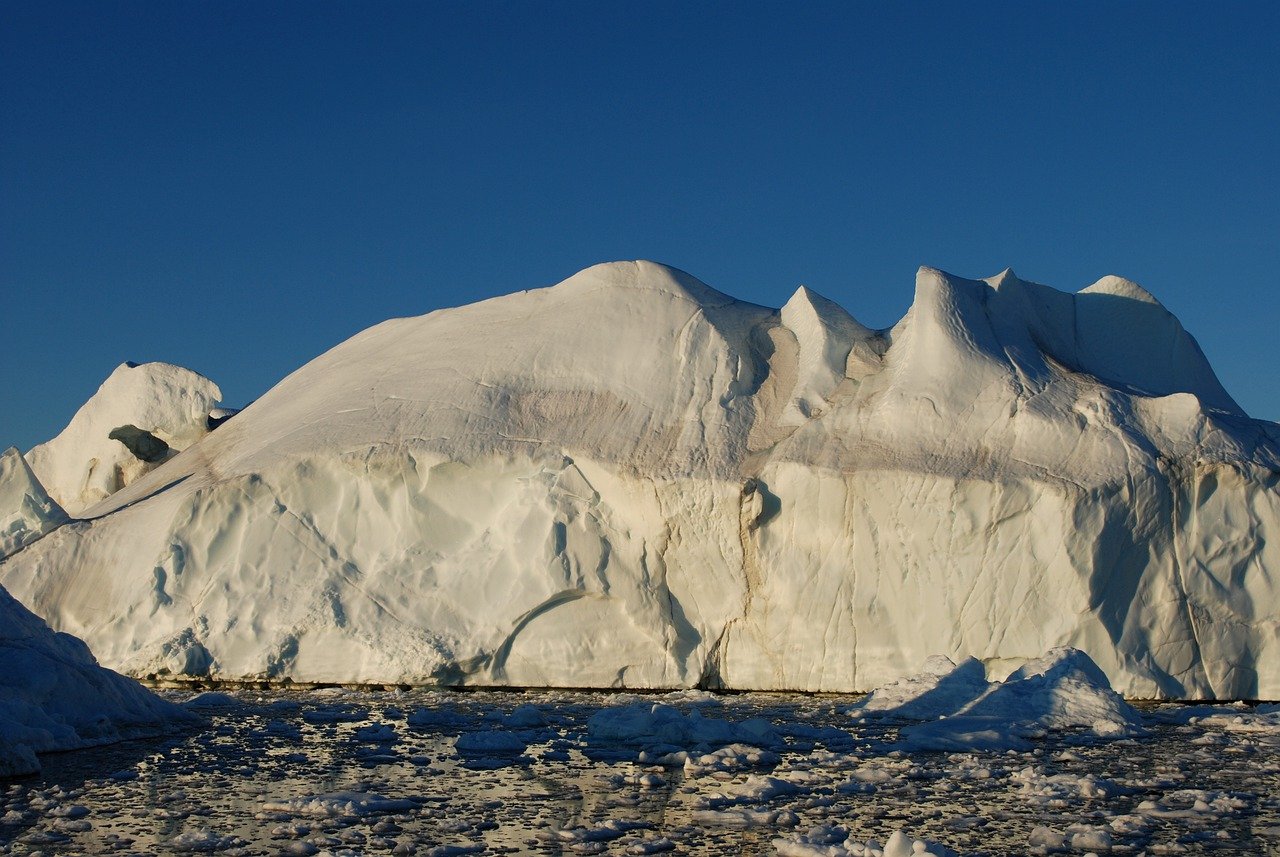
Atmospheric Circulation Patterns
Atmospheric circulation patterns are like the Earth's breathing system, constantly moving air around and distributing heat across the globe. Imagine the planet as a giant engine, where warm air rises and cool air sinks, creating a continuous flow that drives our weather and climate. These patterns are primarily influenced by the uneven heating of the Earth's surface due to the sun, which leads to the formation of high and low-pressure systems. As the sun warms different areas of the planet, particularly the equator compared to the poles, it creates a series of convection cells that dictate wind patterns and precipitation. This interplay of heat and movement is vital for understanding not only local weather but also global climate systems.
One of the most significant aspects of atmospheric circulation is the trade winds, which are found in the tropics. These winds blow from east to west and are essential in driving ocean currents, which in turn affect climate patterns. To visualize this, think of the trade winds as the Earth's conveyor belt, transporting warm air and moisture across vast distances. This interaction between the atmosphere and oceans is crucial for phenomena such as El Niño and La Niña, which can lead to dramatic shifts in weather patterns globally.
Another critical component of atmospheric circulation is the jet streams—fast-flowing air currents found high in the atmosphere. These streams can influence weather systems significantly, acting like a river of air that can steer storms and affect temperature distributions. The position and strength of jet streams can vary, leading to changes in weather patterns, such as prolonged heatwaves or unexpected cold snaps. Understanding these dynamics is essential for predicting weather and climate changes.
To illustrate the complexity of atmospheric circulation, consider the following table that summarizes the key components:
| Component | Description |
|---|---|
| Trade Winds | East-to-west winds in the tropics that drive ocean currents and influence weather patterns. |
| Jet Streams | Fast-moving air currents high in the atmosphere that steer weather systems and affect temperature. |
| Convection Cells | Circulation patterns caused by the uneven heating of the Earth's surface, leading to the formation of high and low-pressure areas. |
As we delve deeper into the physics of climate change, it becomes clear that understanding atmospheric circulation patterns is essential for grasping how our planet's climate operates. These patterns not only dictate daily weather but also play a pivotal role in long-term climate trends. By analyzing these systems, scientists can better predict future climate scenarios and help us navigate the challenges posed by climate change.
- What are atmospheric circulation patterns?
They are large-scale movement patterns of air that distribute heat and moisture around the planet, influencing weather and climate systems.
- How do trade winds affect climate?
Trade winds help drive ocean currents and can significantly influence weather patterns, including the development of storms and precipitation distribution.
- What role do jet streams play in weather?
Jet streams are high-altitude air currents that can steer weather systems, affecting temperature and precipitation patterns across various regions.
- Why is understanding these patterns important?
Understanding atmospheric circulation is crucial for predicting weather changes and addressing the impacts of climate change on our planet.
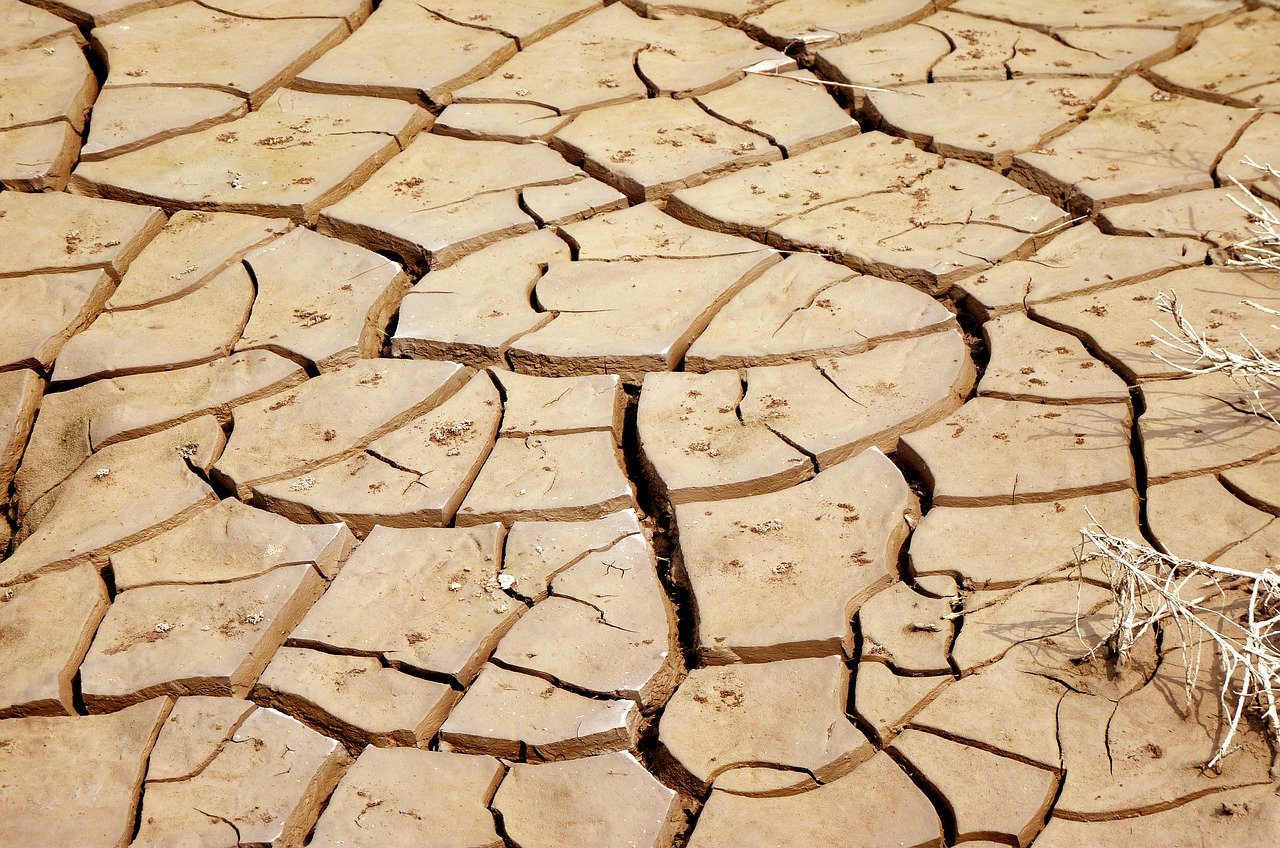
Feedback Mechanisms in Climate Systems
Feedback mechanisms are like the intricate dance partners of climate systems, either enhancing or mitigating changes in our environment. Imagine a snowball rolling down a hill, gaining size and speed as it goes; that’s a positive feedback loop in action. Conversely, think of a safety net that catches a falling object, preventing it from crashing to the ground—this represents negative feedback. Understanding these mechanisms is crucial because they play a pivotal role in climate modeling and predictions.
In the context of climate change, feedback mechanisms can significantly influence the trajectory of global temperatures. For instance, as temperatures rise due to increased greenhouse gas emissions, certain processes can either amplify this warming or help to stabilize the climate. The most notable feedback loops include:
- Positive Feedback Loops: These loops enhance the initial change, leading to further warming. A classic example is the water vapor feedback, where higher temperatures increase evaporation rates, leading to more water vapor in the atmosphere. Since water vapor is a potent greenhouse gas, this results in even higher temperatures.
- Negative Feedback Loops: These loops act to counteract changes. One example is the cloud feedback, where increased temperatures lead to more cloud formation, which can reflect sunlight back into space and potentially cool the Earth.
To illustrate the complexity of these feedback mechanisms, let's take a closer look at the water vapor feedback. As the planet warms, the atmosphere can hold more moisture. This leads to increased humidity, which further enhances the greenhouse effect, creating a cycle that can spiral out of control. According to recent studies, water vapor could account for nearly 60% of the greenhouse effect, highlighting its significance in climate dynamics.
Another critical component of feedback mechanisms is the role of the carbon cycle. Carbon dioxide (CO2) is not just a byproduct of fossil fuel combustion; it interacts with various Earth systems, influencing everything from ocean chemistry to terrestrial ecosystems. When CO2 levels rise, it can lead to increased temperatures, which in turn can release more CO2 from natural reservoirs, such as forests or permafrost. This creates a feedback loop that can accelerate climate change.
Understanding these feedback mechanisms is essential for climate scientists as they develop models to predict future climate scenarios. The complexity of these interactions means that even small changes in one area can have cascading effects throughout the climate system. This is why climate models often include various feedback mechanisms to simulate potential outcomes, providing a more comprehensive picture of what we might expect in the coming decades.
In summary, feedback mechanisms are fundamental to understanding climate change. They can either amplify the effects of warming or serve as a buffer against it. As we continue to grapple with the implications of climate change, grasping these concepts will be vital for informing policy decisions and mitigation strategies. The stakes are high, and understanding these intricate relationships can help us navigate the challenges ahead.
- What are feedback mechanisms? Feedback mechanisms are processes that can either amplify or dampen changes in climate systems.
- What is an example of a positive feedback loop? An example is water vapor feedback, where increased temperatures lead to more water vapor, enhancing warming.
- How do feedback mechanisms affect climate models? They are crucial for accurately simulating potential climate scenarios and predicting future changes.
- Can feedback mechanisms help mitigate climate change? Some negative feedback mechanisms, like cloud formation, can potentially help cool the Earth, but their effectiveness varies.

Water Vapor Feedback
Water vapor feedback is one of the most significant and potent mechanisms driving climate change. As the planet warms due to increased greenhouse gas emissions, the atmosphere can hold more moisture. This phenomenon is not just a side effect; it's a crucial player in the game of climate dynamics. Think of it like adding fuel to a fire; the more water vapor there is, the hotter it gets, which in turn leads to even more water vapor entering the atmosphere. It's a vicious cycle that amplifies global warming.
To understand the implications of water vapor feedback, we need to delve into the physics behind it. When the Earth's surface temperature rises, it causes more water to evaporate from oceans, lakes, and rivers. This added moisture in the atmosphere contributes to an increase in humidity levels. The key point here is that water vapor is a greenhouse gas, meaning it traps heat in the atmosphere. According to the Intergovernmental Panel on Climate Change (IPCC), water vapor is responsible for about two-thirds of the greenhouse effect.
But how does this feedback loop actually work? Let’s break it down:
- Increased Temperature: As CO2 and other greenhouse gases raise the Earth's temperature, the air can hold more water vapor.
- Enhanced Greenhouse Effect: More water vapor leads to greater heat retention in the atmosphere, further warming the planet.
- More Evaporation: Higher temperatures cause more water to evaporate, increasing humidity levels and perpetuating the cycle.
This feedback loop has profound implications for climate models and predictions. Since water vapor feedback can amplify warming, it poses challenges for accurately forecasting future climate scenarios. Climate models must account for this feedback to provide reliable predictions, which is why scientists are continuously refining their models to better understand these complex interactions.
Moreover, the effects of water vapor feedback are not uniform across the globe. Regions with abundant water bodies may experience more pronounced feedback effects, while arid regions might not see the same level of impact. This uneven distribution can lead to regional climate variability, affecting everything from agricultural productivity to water resource management. As such, understanding water vapor feedback is crucial for developing effective climate policies and mitigation strategies.
In conclusion, water vapor feedback is a critical mechanism that underscores the urgency of addressing climate change. As we continue to emit greenhouse gases, we must recognize that the resulting increase in water vapor will only exacerbate the situation. It’s a reminder that our actions have far-reaching consequences, and the need for sustainable practices has never been more pressing.
- What is water vapor feedback?
Water vapor feedback refers to the process where increased temperatures lead to higher humidity levels, which in turn enhances the greenhouse effect and further warms the planet. - How does water vapor contribute to climate change?
Water vapor acts as a greenhouse gas, trapping heat in the atmosphere. As temperatures rise, more water evaporates, leading to even more warming. - Why is water vapor feedback significant in climate models?
Because it can amplify warming, accurately incorporating water vapor feedback into climate models is essential for reliable predictions about future climate scenarios.
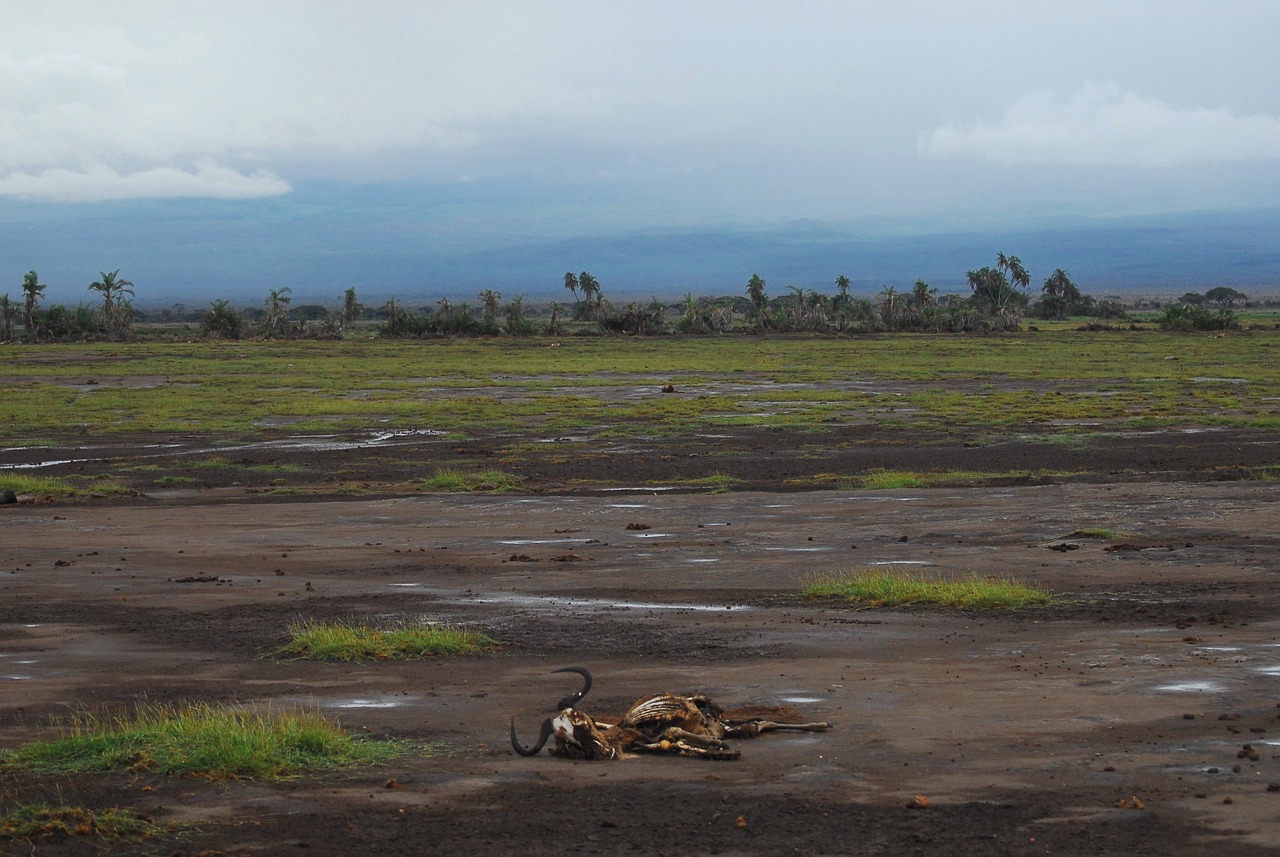
Carbon Cycle Dynamics
The carbon cycle is a fundamental concept in understanding climate change, representing the continuous movement of carbon through various Earth systems. This cycle involves several key processes, including photosynthesis, respiration, decomposition, and combustion. Each of these processes plays a crucial role in regulating the amount of carbon dioxide (CO2) in the atmosphere, which is vital for maintaining Earth's temperature.
At its core, the carbon cycle can be broken down into two main components: the biological carbon cycle and the geological carbon cycle. The biological carbon cycle involves living organisms, where plants absorb CO2 during photosynthesis, converting it into organic matter. Animals, in turn, consume these plants and release CO2 back into the atmosphere through respiration. On the other hand, the geological carbon cycle encompasses processes that occur over much longer timescales, such as the formation of fossil fuels and the weathering of rocks.
To illustrate the various processes involved in the carbon cycle, consider the following table:
| Process | Description | Impact on Carbon Levels |
|---|---|---|
| Photosynthesis | Plants convert CO2 into organic matter using sunlight. | Decreases atmospheric CO2 |
| Respiration | Organisms break down organic matter, releasing CO2. | Increases atmospheric CO2 |
| Decomposition | Microorganisms break down dead matter, releasing CO2 and methane. | Increases atmospheric CO2 |
| Combustion | Burning of fossil fuels releases stored carbon as CO2. | Significantly increases atmospheric CO2 |
As you can see, each process contributes differently to the overall carbon balance. However, human activities, particularly the burning of fossil fuels and deforestation, have significantly disrupted this delicate balance. The rapid increase in atmospheric CO2 levels since the Industrial Revolution is a direct result of these actions, leading to an enhanced greenhouse effect and global warming.
Moreover, the interaction between the carbon cycle and other environmental systems cannot be overstated. For instance, the ocean acts as a major carbon sink, absorbing roughly 30% of the CO2 emitted by human activities. However, as the ocean absorbs more CO2, it becomes more acidic, which poses a threat to marine life and disrupts the carbon cycle even further.
In conclusion, understanding the dynamics of the carbon cycle is essential for grasping the intricacies of climate change. By recognizing how carbon moves through different systems and how human actions impact this cycle, we can better appreciate the urgent need for sustainable practices that reduce carbon emissions and promote environmental health.
- What is the carbon cycle? The carbon cycle is the process through which carbon is exchanged among the atmosphere, land, water, and living organisms.
- How does human activity affect the carbon cycle? Human activities, such as burning fossil fuels and deforestation, increase the amount of CO2 in the atmosphere, disrupting the natural balance of the carbon cycle.
- Why is the carbon cycle important for climate change? The carbon cycle regulates the levels of CO2 in the atmosphere, which is a key greenhouse gas influencing global temperatures.

The Physics of Climate Models
Climate models are the backbone of our understanding of future climate scenarios. They are sophisticated tools that simulate the Earth's climate system, allowing scientists to predict how various factors will influence our planet's temperature and weather patterns over time. These models are built on the fundamental principles of physics, incorporating everything from the laws of thermodynamics to fluid dynamics. By using mathematical equations to represent the interactions between the atmosphere, oceans, land surfaces, and ice, climate models help us grasp the complexities of climate change.
One of the key aspects of climate models is their ability to simulate the interactions between different components of the Earth system. For instance, they can illustrate how increased greenhouse gas emissions lead to higher temperatures, which in turn affect cloud formation and precipitation patterns. This interconnectedness is crucial for understanding how climate change unfolds. The models can also help predict regional climate impacts, which vary significantly across the globe. For example, while some areas may experience more intense droughts, others could face increased flooding due to changing weather patterns.
There are several types of climate models, each with its own strengths and weaknesses. General Circulation Models (GCMs) are among the most comprehensive, simulating the entire climate system at a global scale. They take into account atmospheric and oceanic processes, as well as land surface interactions. On the other hand, Earth System Models (ESMs) expand on GCMs by incorporating biogeochemical cycles, which are essential for understanding carbon dynamics and feedback mechanisms.
| Model Type | Description | Strengths | Weaknesses |
|---|---|---|---|
| General Circulation Models (GCMs) | Simulates the climate system on a global scale | Comprehensive, widely used for predictions | High computational cost, less detail at local levels |
| Earth System Models (ESMs) | Includes biogeochemical cycles | Integrates feedback mechanisms | Complex, requires extensive data |
| Regional Climate Models (RCMs) | Focuses on specific regions | High resolution, detailed local predictions | Limited in scope, relies on GCM outputs |
Despite their power, climate models are not without uncertainties. These uncertainties stem from various sources, including the inherent limitations of the models themselves, the quality of input data, and the unpredictability of future human actions, such as changes in energy consumption or land use. For instance, if we underestimate the rate at which ice sheets are melting or the sensitivity of climate systems to greenhouse gases, our predictions could be off. This is why scientists emphasize the importance of considering a range of scenarios when interpreting model outputs.
Ultimately, climate models serve as vital tools for informing policy decisions and mitigation strategies. By understanding potential future scenarios, policymakers can develop more effective responses to climate change, whether through emissions reductions, adaptation strategies, or investments in renewable energy. The physics behind these models is not just academic; it plays a critical role in safeguarding our future.
- What is a climate model? A climate model is a mathematical representation of the Earth's climate system that simulates interactions between different components to predict future climate scenarios.
- How accurate are climate models? Climate models have varying degrees of accuracy, and while they are powerful tools, they come with uncertainties due to limitations in data and the complexity of climate systems.
- What types of climate models exist? The main types of climate models include General Circulation Models (GCMs), Earth System Models (ESMs), and Regional Climate Models (RCMs), each serving different purposes and scales.
- Why are climate models important? Climate models are essential for predicting future climate conditions, which helps inform policy decisions and strategies for mitigating the impacts of climate change.

Modeling Techniques
When it comes to understanding the complex dynamics of our climate, play a pivotal role. These techniques enable scientists to simulate various climate systems, allowing us to predict future scenarios based on current data. Think of climate models as intricate virtual laboratories where researchers can manipulate variables and observe outcomes without the risks associated with real-world experimentation. By doing so, we can gain insights into how our planet may respond to different levels of greenhouse gas emissions, land use changes, and other influential factors.
There are several prominent modeling approaches used in climate science, each with its own strengths and weaknesses. The two most common types are numerical models and statistical models. Numerical models, such as General Circulation Models (GCMs), rely on the fundamental laws of physics to simulate the atmosphere, oceans, and land surfaces. These models divide the Earth into a three-dimensional grid, where they calculate interactions at each grid point based on physical equations. This method allows for a detailed representation of climate processes, making it highly valuable for long-term climate projections.
On the other hand, statistical models utilize historical climate data to identify patterns and correlations. While they may not capture the full complexity of climate dynamics like numerical models, they can be incredibly useful for short-term forecasts and understanding specific regional impacts. For instance, a statistical model might analyze temperature trends over the past few decades to predict future changes in a particular area, helping local governments prepare for potential climate-related challenges.
Another fascinating aspect of climate modeling is the use of coupled models. These models integrate various components of the Earth system, including the atmosphere, oceans, land surface, and ice. By coupling these components, scientists can better understand the interactions between different systems. For example, how changes in ocean temperatures might influence atmospheric conditions and vice versa. This holistic approach provides a more comprehensive view of climate dynamics and enhances our predictive capabilities.
However, it's essential to acknowledge that with great power comes great responsibility. Climate models are not without their uncertainties. Factors such as incomplete understanding of certain processes, limitations in computational power, and the inherent unpredictability of chaotic systems can introduce variability in predictions. For instance, while models can project trends in global temperature rise, local impacts can vary significantly based on regional factors. This is why ongoing research and refinement of these models are crucial for improving their accuracy and reliability.
In summary, the world of climate modeling is vast and complex, filled with both challenges and opportunities. By utilizing a combination of numerical and statistical techniques, along with coupled models, researchers are working tirelessly to unravel the mysteries of our planet's climate. As we continue to face the pressing issues of climate change, these models will remain indispensable tools in our quest for understanding and mitigation.
- What is the primary purpose of climate models?
Climate models aim to simulate the Earth's climate system to predict future climate conditions based on different scenarios, helping policymakers make informed decisions. - How do scientists validate climate models?
Scientists validate climate models by comparing their predictions with historical climate data and observing how accurately they replicate past climate events. - What are the main types of climate models?
The primary types of climate models include numerical models (like GCMs) and statistical models, each serving different purposes in climate research. - Why are there uncertainties in climate predictions?
Uncertainties arise from various factors, including incomplete scientific understanding, limitations in data and computational resources, and the chaotic nature of the climate system.

Uncertainties in Predictions
The world of climate modeling is a fascinating yet complex arena, brimming with uncertainties that can significantly impact our understanding of future climate scenarios. While these models are essential for predicting changes and informing policy decisions, it’s crucial to recognize that they are not crystal balls. Instead, they are sophisticated tools that rely on a myriad of assumptions and data inputs, which can lead to varying outcomes. So, what exactly contributes to these uncertainties?
One primary source of uncertainty stems from the limitations of data. Climate models are built on historical data, which can sometimes be sparse or incomplete, especially in less-studied regions. For instance, areas like the Arctic have been underrepresented in climate studies, leading to gaps in understanding how these regions respond to warming temperatures. This lack of data can skew predictions, making them less reliable.
Additionally, the complexity of climate systems introduces another layer of uncertainty. The interactions between different components of the Earth’s climate system—such as the atmosphere, oceans, and biosphere—are intricate and not yet fully understood. For example, how do changes in ocean currents influence weather patterns? Or how do shifts in vegetation impact carbon storage? These interactions can lead to feedback loops that either amplify or mitigate climate change, complicating predictions.
Moreover, the models often rely on different scenarios of greenhouse gas emissions based on human activities. These scenarios can vary widely, depending on factors such as technological advancements, policy changes, and societal behavior. For instance, if global emissions decrease rapidly due to stringent climate policies, the outcomes will be vastly different than if emissions continue to rise unchecked. This variability in scenarios means that predictions can diverge significantly, creating a wide range of potential futures.
Another factor contributing to uncertainty is the parameterization of physical processes within the models. Many processes, such as cloud formation and precipitation, are difficult to simulate accurately at a global scale. As a result, modelers must make approximations, which can lead to discrepancies in predictions. For instance, if a model underestimates cloud cover, it might predict higher temperatures than what would actually occur.
To illustrate these uncertainties, consider the following table that summarizes some of the key sources of uncertainty in climate predictions:
| Source of Uncertainty | Description |
|---|---|
| Data Limitations | Inadequate historical data, especially in remote regions. |
| Complex Climate Interactions | Unpredictable interactions between atmosphere, oceans, and biosphere. |
| Emission Scenarios | Different pathways based on human activities and policies. |
| Parameterization of Processes | Approximations for difficult-to-model processes like cloud formation. |
In summary, while climate models are invaluable for predicting future climate scenarios, the uncertainties inherent in these predictions remind us that we are still piecing together a complex puzzle. As we continue to gather data and improve our understanding of climate systems, we can refine these models, making them more robust and reliable. However, it’s essential to approach predictions with a critical eye, recognizing that they are only as good as the data and assumptions they are based on.
- What are climate models? Climate models are computer simulations that use mathematical equations to represent the interactions of various components of the climate system.
- Why are there uncertainties in climate predictions? Uncertainties arise from limitations in data, complex climate interactions, varying emission scenarios, and the parameterization of physical processes.
- How can we improve climate predictions? Improving data collection, enhancing our understanding of climate processes, and refining modeling techniques can lead to more accurate predictions.
- What role do greenhouse gases play in climate change? Greenhouse gases trap heat in the atmosphere, leading to an increase in global temperatures and altering climate systems.
Frequently Asked Questions
- What are greenhouse gases and why are they important?
Greenhouse gases, such as carbon dioxide and methane, play a crucial role in trapping heat in the Earth's atmosphere. They are essential for maintaining a temperature that supports life. However, human activities have significantly increased their concentrations, leading to global warming and climate change.
- How does solar radiation affect our climate?
Solar radiation is the primary energy source that drives Earth's climate. It interacts with the atmosphere and surface, influencing weather patterns and climate dynamics. The balance between absorbed and reflected solar energy is vital for regulating temperatures across the globe.
- What is the albedo effect and why does it matter?
The albedo effect refers to how different surfaces reflect sunlight. For instance, ice and snow have high albedo, reflecting most sunlight, while darker surfaces absorb more heat. This effect is crucial in climate feedback loops, as changes in surface albedo can accelerate or mitigate warming trends.
- How does urbanization impact local climates?
Urbanization often leads to lower albedo due to the prevalence of concrete and asphalt, which absorb more heat. This phenomenon contributes to the urban heat island effect, where cities experience higher temperatures than surrounding rural areas, affecting local weather patterns and energy consumption.
- What are feedback mechanisms in climate systems?
Feedback mechanisms can either amplify or dampen the effects of climate change. Positive feedback loops, like water vapor feedback, can enhance warming, while negative feedback loops may help stabilize temperatures. Understanding these mechanisms is essential for accurate climate modeling and predictions.
- How does the carbon cycle relate to climate change?
The carbon cycle involves the movement of carbon through various Earth systems, including the atmosphere, oceans, and land. Human activities, such as burning fossil fuels, disrupt this cycle, leading to increased carbon dioxide levels and contributing to global warming.
- What are climate models and why are they important?
Climate models are sophisticated tools that simulate Earth's climate systems to predict future climate scenarios. They help scientists understand potential impacts of climate change and inform policymakers on necessary mitigation strategies. These models are crucial for preparing for and adapting to climate-related challenges.
- What are the uncertainties in climate predictions?
While climate models provide valuable insights, they come with uncertainties due to factors like incomplete data, unpredictable natural events, and the complexity of climate systems. Understanding these uncertainties is important for making informed decisions regarding climate policy and adaptation measures.

